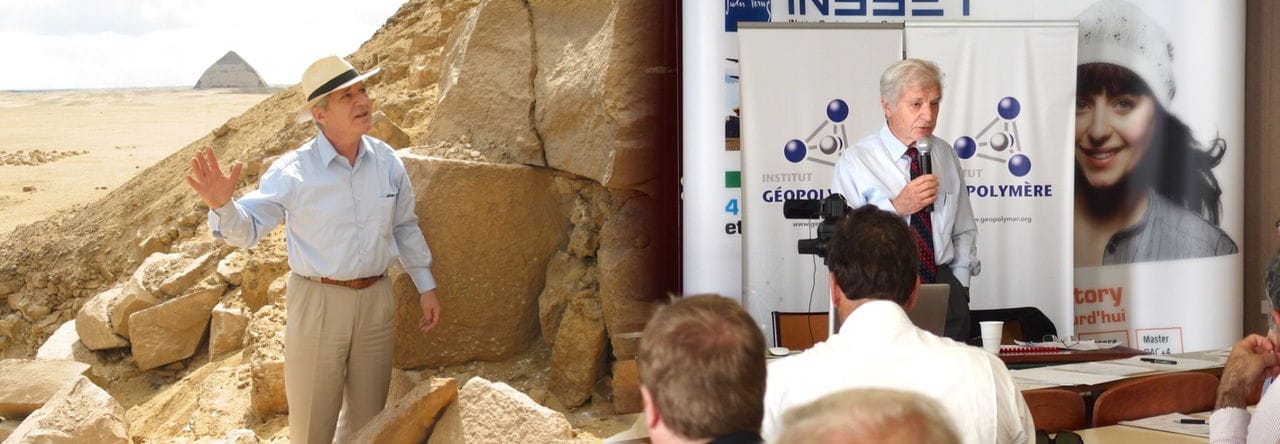From the photos available, the stone material seems to be natural pudding stone or perhaps man-made stone, a type of Roman concrete, called Opus Caementium. I am waiting for more data.
Update Nov. 10, 2013
According to our information, we believe that the sample of concrete that I have examined under the electron microscope comes from a type of cistern or water tank (the drilling report is mentioning a concrete “ceiling” and an empty space of 4 meters depth followed by a “concrete” floor, see the pdf below). The geopolymer concrete analyzed is a kind of Roman concrete, which in no way corresponds to the materials that constitute the casing of the pyramids and look like pudding stone. Consequently, the information published on the Bosnian Pyramids websites are inaccurate.
Update August 14, 2011
I did not perform any datation on this concrete sample. I know that it is not modern concrete, but a material with artificial pozzolan (calcined clay), a technique that was used during the Middle Ages in Europe, earlier by the Romans 2000 years ago, and also by the Egyptians 3500 years ago. It could also have been known by the Egyptian Pyramid builders (Imhotep 2700 BC) at Saqqarah. I do not have any data that may suggest anything older.
Update February 21, 2011
I am enclosing the pdf file related to my analysis on a concrete from the pyramid foundation.
Bosnian Pyramid Geopolymer Concrete
Update February 8, 2009
I read with pleasure the last news about the analysis carried out at the University in Zenica, Bosnia. This confirms the first impression I got by studying the sample of concrete Semir Osmanagic gave me in Edinburgh. I was struck by the presence of pockets of what seemed to be calcined clay.
In the internet site Archaeological Park: Bosnian Pyramid of the Sun Foundation, the news dated of 03 February 2009, STONE BLOCKS FROM THE BOSNIAN PYRAMIDS ANALIZED; RESULT – ANCIENT CONCRETE, reproduces the statement by professor Muhamed Pasic from the Institute for materials, “… that poorly baked clay crushed with water possesses binding properties …”, and was used to produce the concrete blocks that look like natural pudding stone. Everybody should know and acknowledge that some clays, notably those based on kaolinitic make up, when calcined, or backed at moderate temperature, i.e. between 500 and 750 °C, yield a very reactive material that is called metakaolin, when pure. This material is one of the preferred reactive ingredient (among others) in our modern geopolymer technology and geopolymer concrete. Go to the Geopolymer Institute. It has been the basis of the best Roman cement mastered by the Roman Engineers 2000 years ago, who added to lime the backed clay called in latin “testa”, translated into pot-sherd or backed clay. The result of this technology was called Opus Signinum and Opus Testacaeum and can be admired today in the Pantheon and the Coliseo, the Thermal Baths, etc.. in Rome. Our knowledge about the reactivity of this moderate temperature backed clay is very young (I discovered it, 30 years ago) and I am enthousiatic in reading that it could have been used by those who built the Bosnian Pyramid of the Sun, Visoko.
Update December 3, 2008
I got a piece extracted at the “pyramid foundation”. It is made of antique concrete (not modern) worth of being analyzed.
Update Sept. 21, 2008
Excavations are on the way and the results are indeed interesting. I’ll discuss it when I meet with Semir Osmanagic in Edinburgh. See Histories & Mysteries Conference.
 In English
In English En Français
En Français